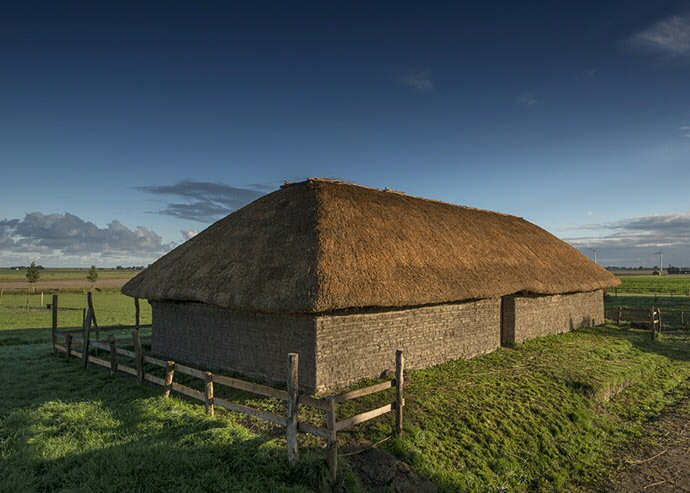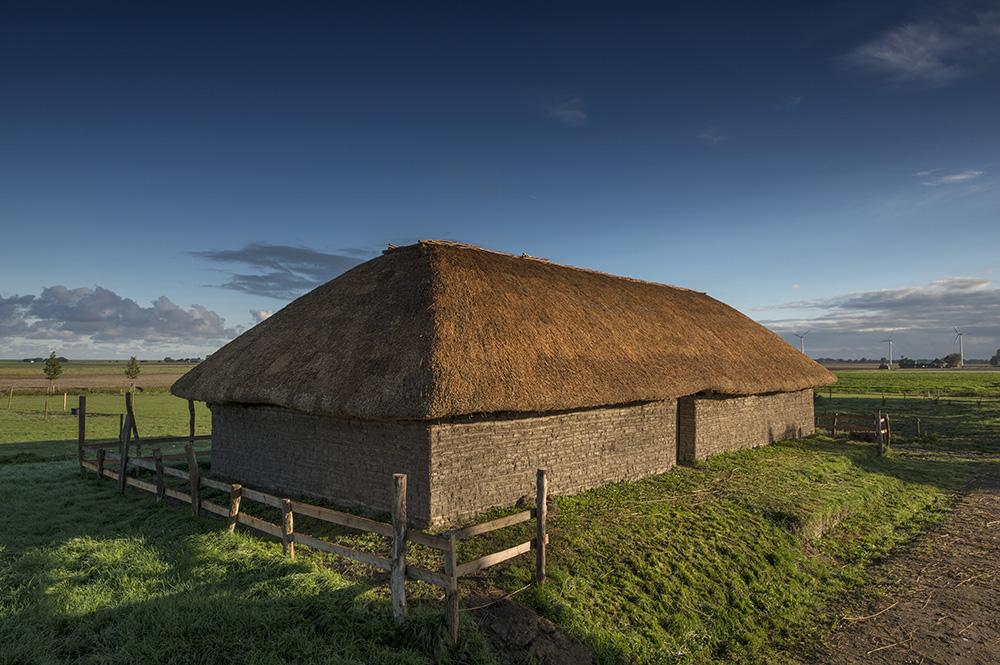Reconstructie vroegmiddeleeuws zodenhuis geopend

De reconstructie van een vroegmiddeleeuws zodenhuis in Firdgum is nu open voor publiek. Vrijdag is het zodenhuis officieel geopend door gedeputeerde Kramer van de provincie Fryslân. De bouw van deze bijzondere archeologische reconstructie is gecoördineerd door het Terpencentrum van de Rijksuniversiteit Groningen. Het project maakt deel uit van het promotieonderzoek van Daniël Postma naar bouwtradities in het Noord-Nederlands kustgebied. Postma presenteerde vrijdag tevens zijn boek ‘Het zodenhuis van Firdgum - Middeleeuwse boerderijbouw in het Friese kustgebied tussen 400 en 1300’. Hierin wordt uitgebreid verslag gedaan van het ontwerp- en bouwproces van het zodenhuis en een geheel nieuwe visie gepresenteerd op de bouwkundige ontwikkeling van de Noord-Nederlandse boerderij.
De gereconstrueerde terpboerderij vervangt het exemplaar dat in 2013 gedeeltelijk instortte na lekkage van het dak. Dankzij de hernieuwde inzet van vele vrijwilligers kon in 2014 worden begonnen met de herbouw van het zodenhuis. Afgelopen oktober zijn de laatste werkzaamheden aan het dak afgerond. Kenmerkend voor het 17 meter lange stalgebouw is het gebruik van een bijna één meter dikke, dakdragende muur van op elkaar gestapelde zoden, zoals dat in de vijfde tot begin achtste eeuw gebruikelijk was in het terpengebied. Het is bovendien de eerste archeologische reconstructie met een boogvormige kapconstructie, een opvallend verschil met de rechthoekige gebinten in nog bestaande historische boerderijen.

Het zodenhuis is een onderdeel van het archeologisch steunpunt in het Yeb Hettinga Museum in Firdgum en is tijdens de openingstijden van het museum te bezichtigen. Het rijk geïllustreerde zodenhuisboek is toegankelijk geschreven. Het is verkrijgbaar in de museumwinkel in Firdgum en via Barkhuis Publishing. Vanaf half november is het ook te bestellen in de boekhandel. In het boek worden tevens aanbevelingen gedaan voor toekomstig archeologische nederzettingsonderzoek en wordt voorgesteld om bij nieuwe experimenten ook mogelijkheden voor archeologisch geïnspireerde vormen van duurzame nieuwbouw na te streven. De komende maanden zal Postma de studie omwerken tot academisch proefschrift.
Voor meer informatie
- Bezichtiging zodenhuis: Yeb Hettinga Museum
- Archeologisch onderzoek: Daniël Postma
Meer nieuws
-
07 januari 2026
Hoe muziek het Gronings helpt opleven
-
16 december 2025
Hoe AI mensen met taalstoornissen kan helpen hun spraak te vinden
-
18 november 2025
Een wifebeater? Hoe taal schadelijke ideeën versterkt
